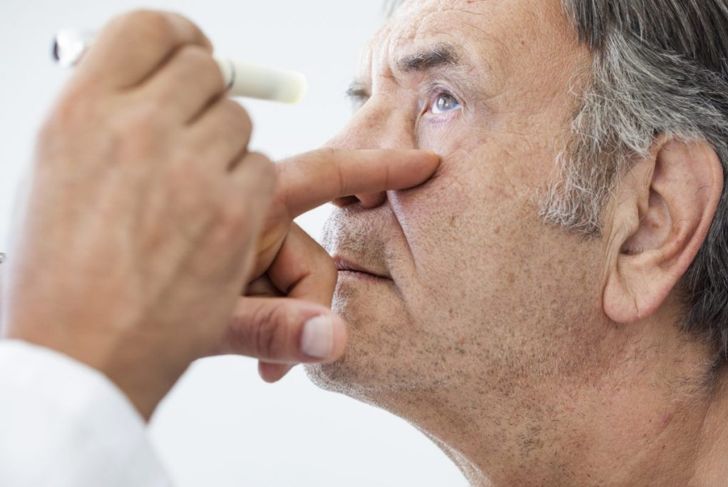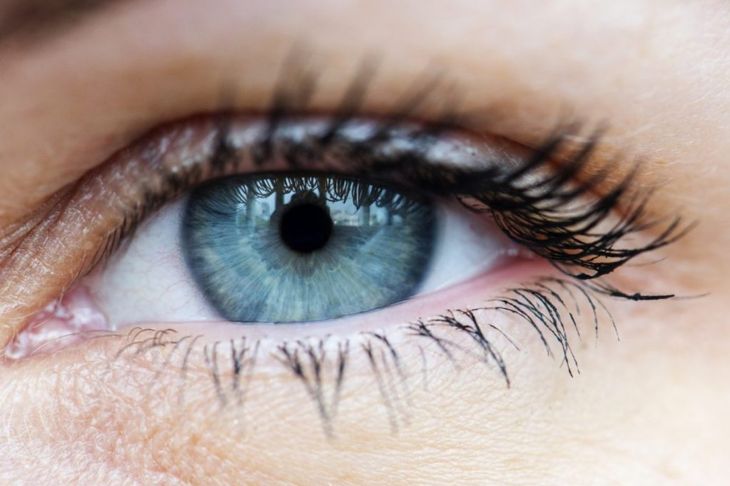Ptosis is the medical term for a droopy eyelid. Anyone can experience a droopy eyelid, and the cause can stem from benign natural issues, responses to trauma, or more rarely, a serious condition. Ptosis affects adults primarily, but people of all ages can experience it. Some babies are born with a droopy eyelid that will rectify itself over time. There are many causes of ptosis, most of them relatively harmless.
Ptosis at a Glance
Ptosis isn’t a disease in and of itself but rather a symptom of another condition. This condition can be benign or severe, so if the problem persists, it is recommended the individual seek a medical opinion. Some of the more innocent causes of ptosis include anxiety and allergies. Rarely, ptosis is symptomatic of an illness like cancer or stroke. Even when ultimately harmless, a droopy eyelid can affect vision and thereby many everyday activities like driving or working.
What Causes Ptosis?
From the nerves to the muscles, and even the skin of the eyelids, many different factors cause ptosis. One common cause: weakness of the levator muscles that control your eyelids. These muscles can weaken over time, due to aging or injury.
The Symptoms of Ptosis
Keeping in mind ptosis is a symptom itself, there are indicators of ptosis of which you can be aware. Besides the drooping eyelid, someone with ptosis may experience frequent, involuntary eyebrow-raising, blinking, or odd facial gestures. A drooping eyelid is the most common sign, however, and is not often accompanied by these other symptoms.
Horner Syndrome
People with a condition called Horner syndrome often experience ptosis. Horner syndrome is the disruption of the nerve pathway between the brain and the face. Like ptosis, the syndrome can signify a larger medical problem such as a tumor or a stroke. Identifying the underlying cause and receiving effective treatment can restore nerve function.
Anxiety
Eyelid drooping related to anxiety will often fade as your stress lessens, though sometimes ptosis can remain past the most immediate stressors. In such cases, it is best to let the symptom pass on its own, as worrying about it will only exacerbate what caused it in the first place.
Stroke
A drooping eyelid — or paralysis of one side of the face — is a common sign of stroke and is usually the first thing a person thinks of when their eyelid droops. If ptosis is the related symptom you experience, you probably aren’t having a stroke, but if ptosis occurs out of nowhere, alongside other symptoms of stroke, call emergency services right away. Other symptoms include drooping facial features, slurred speech, and a dead arm. Remember: Act FAST (Face, Arms, Speech, Time).
Diabetic Neuropathy
Diabetic neuropathy is nerve damage caused by diabetes. It’s one of many complications that can arise from this condition, and one of the most common causes of neuropathy. 60% of people with diabetes have some form of nerve damage. Diabetic neuropathy can flare up to affect just one nerve or a specific group of them. Weakness and muscle atrophy may occur in several different parts of the body, including the eye muscles. Other symptoms of diabetic neuropathy include indigestion, nausea, dizziness, and tingling pain, among others.
Lack of Sleep
Lack of sleep and eye strain are two of the leading causes of ptosis. When you don’t get an adequate amount of sleep, drooping eyelids can indicate this lack much like dark circles or bags under the eyes. According to a sleep study by the CDC, more than 30% of Americans over 18 do not get enough sleep.
Brain Tumors and Aneurysms
Although the vast majority of ptosis cases relate to the levator muscle or other common ailments, it can also be a sign of something more serious. Tumors and aneurysms in the brain sometimes cause drooping eyelids. Tumors may be — but aren’t always — cancerous. Aneurysms are caused by the swelling of blood vessels in the brain. Speaking with a doctor is always a good idea if you are worried, but bear in mind tumors, and brain aneurysms make up a tiny percentage of ptosis cases.
Myasthenia Gravis
Myasthenia gravis is an extremely rare but chronic autoimmune disease that causes muscle weakness in the face. Most commonly, it affects the levator muscle and other muscles that control the eyes and facial expressions, but it can also spread to other parts of the body.Ptosis is the number one symptom of myasthenia gravis. It’s the first symptom to appear and, for the most part, the most noticeable. The symptoms of the condition worsen when the individual is overtired, and severity differs from person to person. Other symptoms of myasthenia garvis include double vision and difficulty chewing.

 Home
Home Health
Health Diet & Nutrition
Diet & Nutrition Living Well
Living Well More
More




















